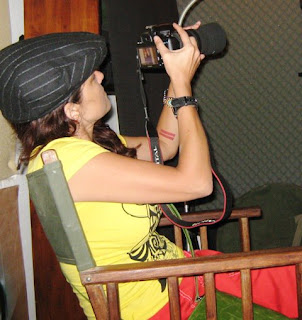With that said, I'm very excited to announce the World Premiere of a new film I've completed on the use of mobile phones in assisting women in Tanzania suffering from a childbearing injury called obstetric fistula to receive free treatment.
The film, entitled "Mobile Phones + Fistula: What's Next?", co-produced with UNFPA and the Campaign to End Fistula, will debut at the historic Zanzibar International Film Festival (ZIFF) - East Africa's largest film and music festival taking place July 7-15, 2012. The film has also been accepted into the Women's Panorama program which takes select films and screens them in the villages in Zanzibar.
For more information about exact screening times and subsequent screenings, please subscribe to this blog or join our Facebook Film Page at http://www.facebook.com/MobilePhonesFistulaFilm
You can read the film synopsis below.
FILM SYNOPSIS:
Around the world, nearly 350,000 women will die each year in childbirth. Of those who survive, 50,000-100,000 will develop a horrific childbearing injury called obstetric fistula which leaves women incontinent and shunned from society.
Although in many countries free treatment for
fistula repair is available, the majority of women living with fistula
cannot afford the transportation to the hospitals providing the
treatment.

In Dar es Salaam, Tanzania, an innovative mobile phone
program at the CCBRT Hospital is allowing funds to be transferred
through the mobile banking service, M-PESA, to 'community ambassadors'
who assist in identifying and facilitating transportation for women
suffering from this condition. Since the founding of the project in
2009, there has been a 65% increase in the number of surgeries performed
at CCBRT.
"Mobile Phones + Fistula: What's Next?" is a new
documentary film by Emmy-winning filmmaker, Lisa Russell, with support
by UNFPA and the Campaign to End Fistula. Shot on location in Tanzania,
the 15-minute film documents the life-changing program at CCBRT and
includes testimonies from women living with fistula, community
ambassadors, fistula repair surgeons, and fistula advocates. The film,
which will be distributed in both English and eventually Swahili, will
be used to inspire replication of this good practice as well as develop
new ideas about using mobile phones to reach women and girls living with
fistula in the future."
"Mobile Phones + Fistula: What's Next?" will have
its World Premiere at the historic Zanzibar International Film Festival
and will be part of the Women's Panorama program. It will then be
available for screening events globally and hosted online.
For updates about the film, join our Facebook Film Page at http;//www.facebook.com/
Genre: Documentary Short
Technical Data: HD, Color
Running Time: 15 minutes








